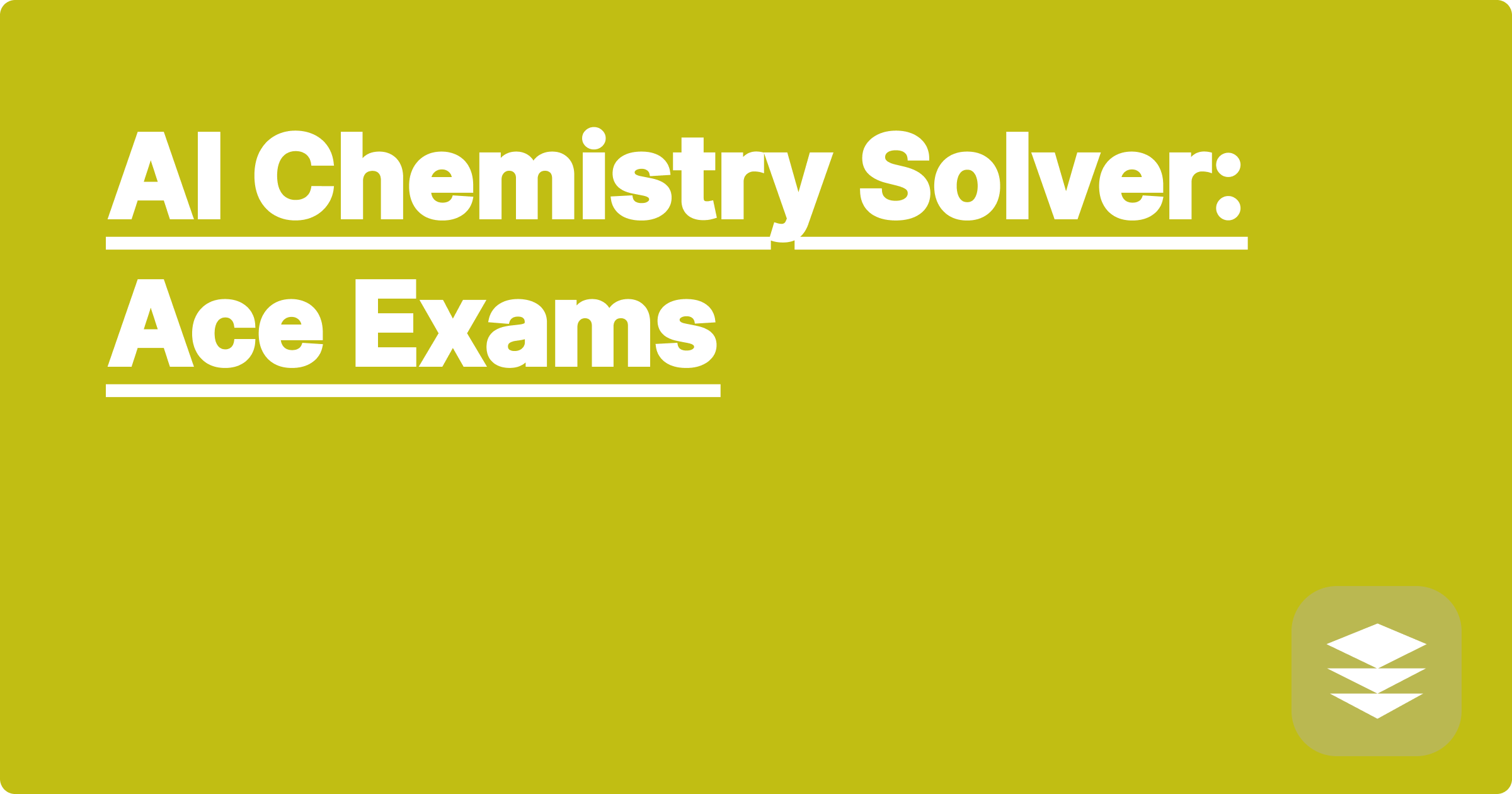
STEM fields, particularly chemistry, often present complex challenges that can be daunting for students and researchers alike. Balancing equations, predicting reaction outcomes, and understanding intricate molecular interactions require significant time, effort, and a deep understanding of fundamental principles. Fortunately, the rise of artificial intelligence offers new avenues for tackling these challenges, providing powerful tools to augment understanding and accelerate the learning process. AI-powered solutions can act as intelligent assistants, guiding users through complex problems and offering insightful explanations, thereby transforming the way we approach chemical problem-solving.
This new paradigm shift in STEM learning is particularly relevant for students and researchers seeking to enhance their understanding and efficiency. AI tools can provide personalized support, offering step-by-step guidance through complex problems and offering alternative approaches to solutions. For researchers, these tools can automate tedious tasks, freeing up valuable time for more creative and strategic endeavors. Ultimately, the integration of AI in chemistry empowers learners and researchers to achieve greater depth of understanding and accelerate the pace of scientific discovery.
Chemistry, at its core, involves the study of matter and its interactions. This encompasses a wide range of topics, from the basic structure of atoms and molecules to the complex reactions that govern the behavior of chemical systems. One of the most fundamental challenges in chemistry is balancing chemical equations, ensuring that the number of atoms of each element is equal on both sides of the equation. This seemingly simple task can become incredibly complex when dealing with multiple reactants and products, especially in redox reactions where electron transfer needs to be accounted for. Beyond balancing equations, predicting reaction outcomes and understanding the underlying mechanisms require a deep understanding of chemical principles, including thermodynamics, kinetics, and equilibrium. Furthermore, visualizing molecular structures and understanding their properties can be challenging, particularly for complex organic molecules with intricate 3D geometries.
AI-powered tools like ChatGPT, Claude, and Wolfram Alpha offer innovative solutions to these challenges. These tools leverage advanced natural language processing and computational capabilities to provide step-by-step guidance, explanations, and even predictive analysis for chemical problems. For instance, ChatGPT can be used to explain concepts, provide definitions, and even generate practice problems. Claude can assist in summarizing complex research papers and extracting key information related to chemical reactions and properties. Wolfram Alpha, with its powerful computational engine, can perform complex calculations, predict reaction outcomes, and even generate 3D molecular structures. By combining these tools, students and researchers can create a powerful and personalized learning environment.
Let's consider the task of balancing a redox reaction. First, you would input the unbalanced equation into the AI tool, for example, ChatGPT or Wolfram Alpha. Then, you would ask the tool to balance the equation. The AI will process the input and, using its algorithms, generate the balanced equation. Furthermore, you can ask the AI to explain the steps involved in balancing the equation, which it will provide in a clear and concise manner. This allows you to understand the underlying principles and apply them to other similar problems. You can also use Wolfram Alpha to calculate the oxidation states of each element in the reaction, providing further insight into the electron transfer process.
For example, consider the reaction between potassium permanganate (KMnO4) and iron(II) sulfate (FeSO4) in an acidic solution. Inputting this unbalanced reaction into Wolfram Alpha will generate the balanced equation: 2KMnO4 + 10FeSO4 + 8H2SO4 → K2SO4 + 2MnSO4 + 5Fe2(SO4)3 + 8H2O. Furthermore, the AI can provide the oxidation states of manganese and iron, showing the change in oxidation state during the reaction. Another example is predicting the product of a reaction between two organic molecules. By inputting the reactants into ChatGPT or Claude, you can obtain possible reaction pathways and predicted products, along with explanations of the reaction mechanisms. This can be invaluable for planning synthesis routes in organic chemistry research. You can also use these tools to generate code snippets for molecular simulations or data analysis, streamlining the research process.
To effectively utilize AI in STEM education and research, it’s crucial to develop a strategic approach. First, focus on understanding the underlying principles rather than simply relying on the AI for answers. Use the AI as a tool to supplement your learning and explore different approaches to problem-solving. Second, actively engage with the AI by asking clarifying questions and exploring different scenarios. This will help you develop a deeper understanding of the concepts and improve your problem-solving skills. Third, verify the information provided by the AI using other resources, such as textbooks and peer-reviewed articles. This is crucial for ensuring accuracy and developing critical thinking skills. Finally, explore the different features and capabilities of various AI tools to find the ones that best suit your learning style and research needs.
Continuing to explore and experiment with these powerful tools will be crucial for staying at the forefront of this rapidly evolving field. Embrace the potential of AI to transform your learning and research journey, using it as a powerful tool to unlock new levels of understanding and innovation. By combining your own knowledge and critical thinking with the computational power of AI, you can achieve greater success in your STEM endeavors.
AI Chemistry Solver: Ace Exams
AI Statistics Help: Data Analysis